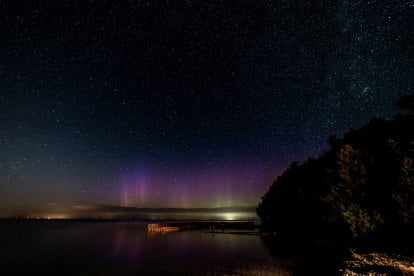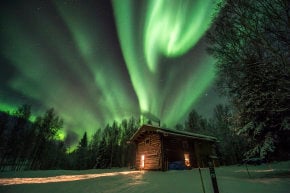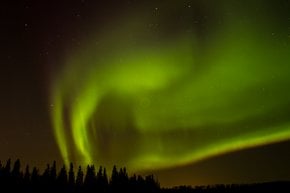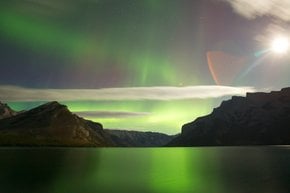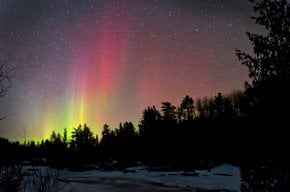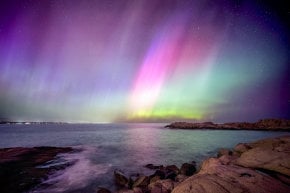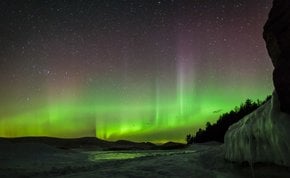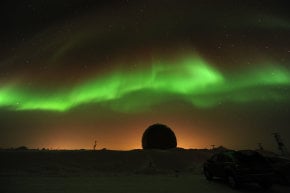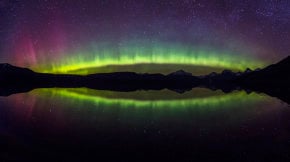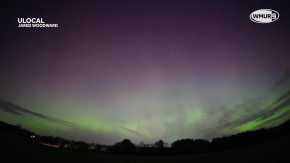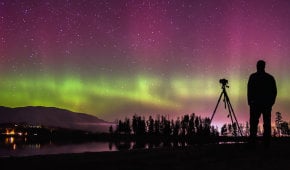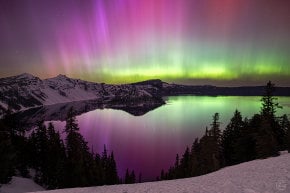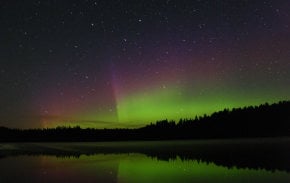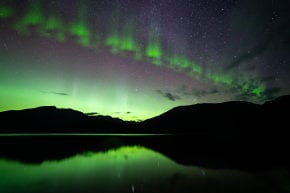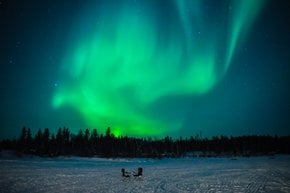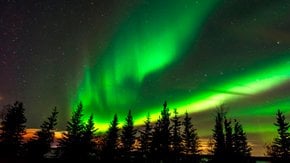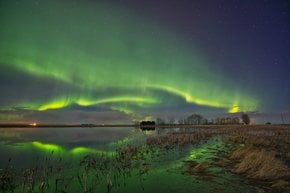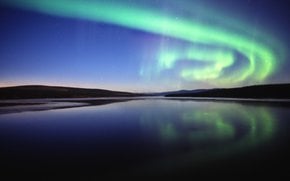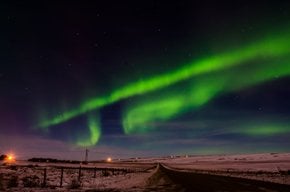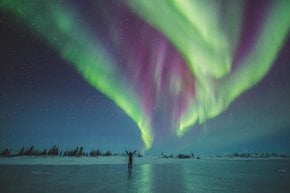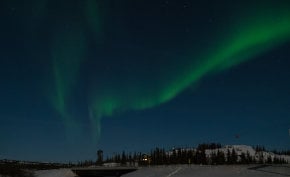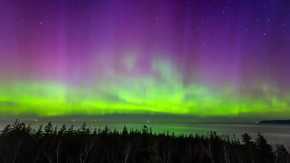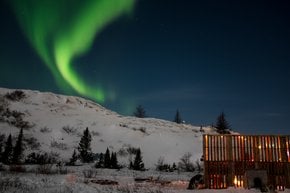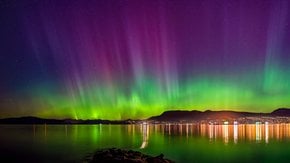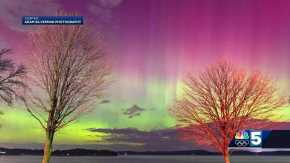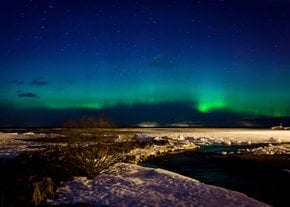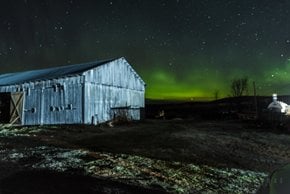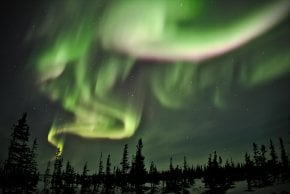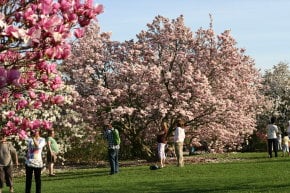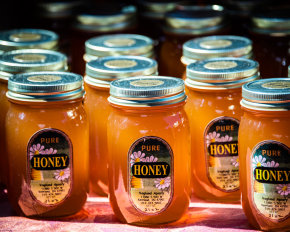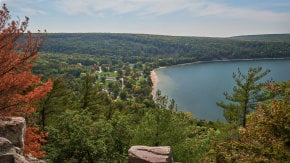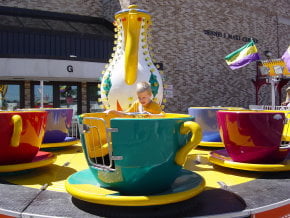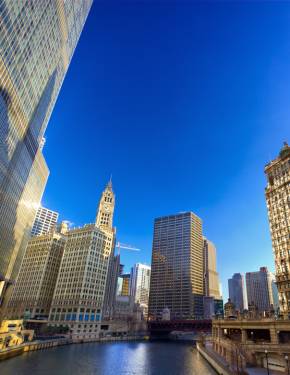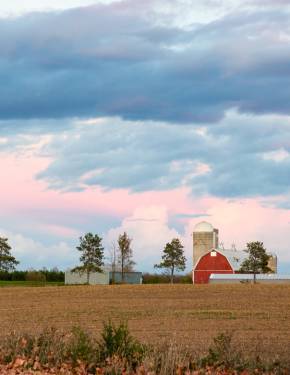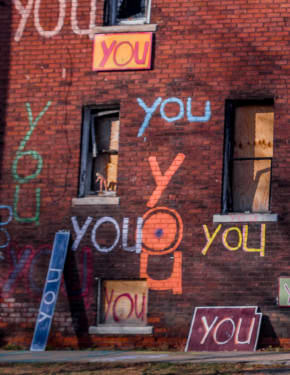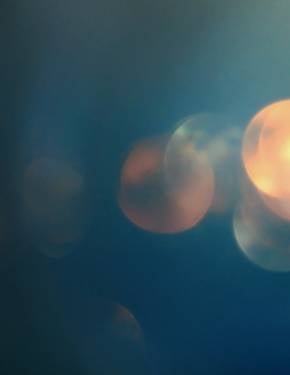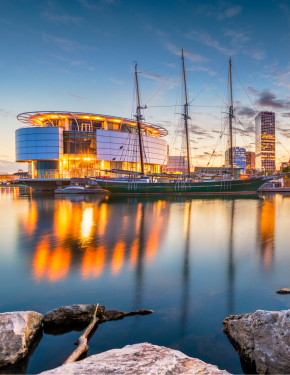Northern Lights in Wisconsin 2025-2026
Aurora borealis is an annual phenomenon along the Great Lakes in Northern Wisconsin
Best time: September–March
Wisconsin is well-positioned to enjoy the rare sight of aurora borealis. Beautiful dancing lights, coloring the skies in green, red, and purple, can be seen the best in the northeastern part of the state when the skies are dark, and there is enough geomagnetical activity that causes the natural phenomenon. Aurora chasers have to check websites measuring geomagnetical or solar activity in the KP-index. You need KP to be more than 5 to be able to see something in Wisconsin.
Aurora borealis season in Wisconsin
The season for aurora borealis in the Northern Hemisphere generally runs from September through March. Autumn and spring often experience solar storms, so there are more chances to see aurora borealis. Summer skies are quite dark in Wisconsin, so seeing aurora is a possibility.
The best time for viewing northern lights
The darkest hours of the night, from approximately 11 pm to 2 am, are commonly the best times to look for auroras. Aurora hunters may have to stay up late, as it's hard to predict exactly when they'll appear. You don't need any special equipment to see the northern lights.
Northeast Wisconsin
Aurora Borealis by Lake Michigan
Door County is the premier destination for aurora chasers in Wisconsin. Surrounded by the waters of Green Bay on one side and Lake Michigan on the other side, Door County has dark skies and low light pollution, especially as you move north. Aurora can be seen from an observation tower near Potawatomi State Park in Sturgeon Bay. Or you can move further north and see it near North Bay and Rowleys Bay. Visit Newport State Park, a designated dark-sky reserve in Wisconsin. Washington Island is another iconic spot in North Door County where locals enjoy the beautiful phenomenon on a regular basis.
Southeast Wisconsin
Milwaukee
If you get lucky, you can experience northern lights even in the southern part of the state. In May 2024, aurora borealis was visible in downtown Milwaukee and across the city, However, if you get away from the light pollution in a big city, you significantly increase your chances to see the phenomenon. Harrington Beach State Park, located on the shore of Lake Michigan, about 40 minutes north of Milwaukee, is one of the best places to see aurora in the region. Further north, you can explore waterfront Kohler-Andrae State Park, within about an hour's drive from the city. The park boasts unobstructed views of the northern skies. Within a short drive west of the coast, you'll find the Kettle Moraine State Forest, which has very little light pollution. Parnell Tower, the highest point in the Kettle Moraine North Section, is a suitable vantage point to gaze at the northern skies.
Southcentral Wisconsin
Madison
The Driftless Region, located northwest of Madison, is one of the best places to hunt for aurora in the southcentral and southwestern part of the state. This unique area is known for its steep, rugged landscape, karst topography, and cold water springs. Located on a ridge above the Kickapoo River, Wildcat Mountain State Park offers good elevation and very dark skies. Wildcat Mountain and Mount Pisgah provide perfect unobstructed views of the horizon. Tunnelville Cliffs State Natural Area along the Kickapoo River and Kickapoo Valley Reserve, with beautiful sandstone outcroppings towering over the Kickapoo River, are also suitable for night-time excursions.
Northwest Wisconsin
Aurora Borealis by Lake Superior
Lake Superior is one of the best locations for observing the northern lights in the Midwest. The Wisconsin coast also boasts quite a few scenic spots by the water where aurora enthusiasts can see the elusive lights. Most good locations to see the aurora borealis are in Ashland and Bayfield counties.
Apostle Islands National Lakeshore, featuring 21 islands and 12 mi (19 km) of Lake Superior coast, is an ideal spot for an aurora borealis hunt. You can also visit the Nourse Sugarbush State Natural Area, which has dark skies and beautiful scenery. Your best chance to catch a glimpse of the aurora will be during a clear, dark night with a young moon.
Aurora watching tips
When you are expecting a solar storm that may cause auroras, try to get out of the city to minimize the impact of light pollution. Solar particles interact with specific atoms in Earth's atmosphere to create the colors of aurora borealis and australis. You will most probably see a faint green glow on the horizon, which will not be as impressive as auroras in Alaska or Yukon. However, if you photograph the phenomenon with a long exposure, you can actually see more glow and colors on camera than with the naked eye.

